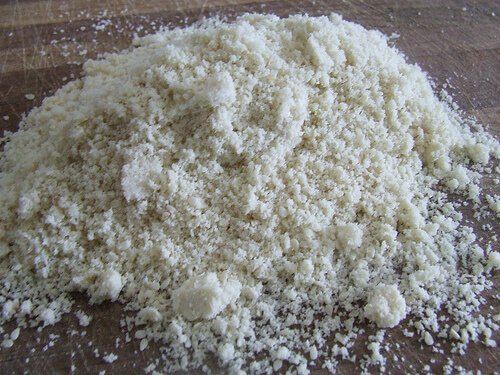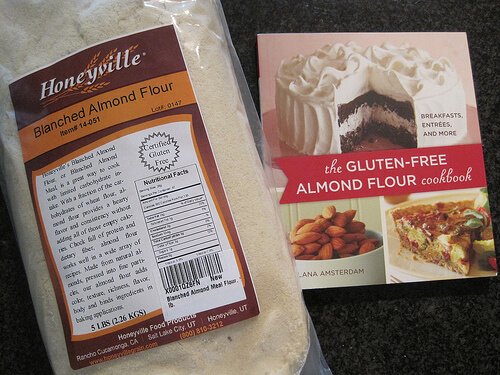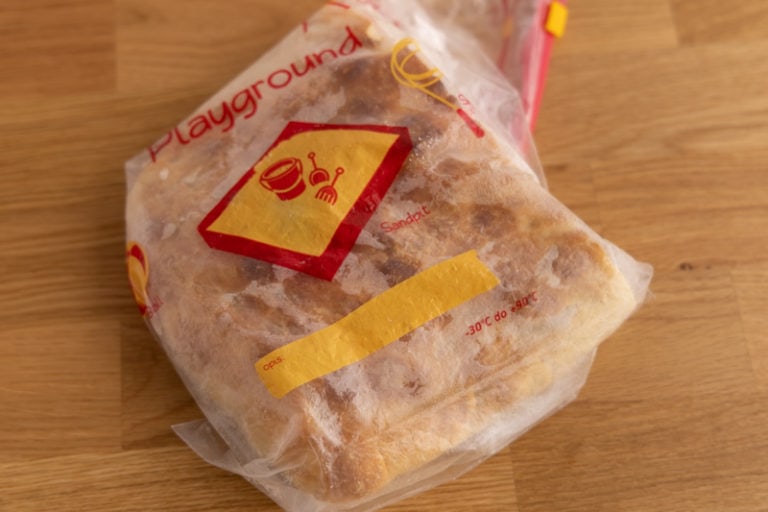Does Almond Flour Go Bad? [Storage, Shelf Life, and Expiration]
Here’s all you need to know about the shelf life, storage, and expiration of almond flour. Learn how long almond flour lasts, how to store it, and what are the spoilage signs.
Got a half-open bag of almond flour that’s been sitting in storage for months, and wondering if you can still use it? Does almond flour go bad?
Or you’ve just opened a fresh one and want to know how long it will retain quality and where you should store the leftovers. How long does almond flour last, and how to store it?
Sounds familiar?
If so, this article is for you. Let’s jump right in.
Almond flour is yet another almond-based product that’s been gaining popularity recently. If you’re interested in others, we have a guide on how long almond milk lasts and an article that tries to answer the question: can you freeze almond milk?

Does Almond Flour Go Bad?
Almond flour doesn’t last nearly as long as all-purpose flour. Since it’s made of almonds, its fat content is quite high, and that fat will go rancid if stored for too long or in poor conditions. That’s also why some brands recommend storing their almond flour in the fridge or even freezing it to prolong its shelf life.
(Coconut flour goes bad for the same exact reasons.)
Knowing that, let’s talk about the spoilage signs.
How to Tell If Almond Flour Is Bad?
Your almond flour is bad if it smells off, bitter, or sour, or if its color changes. All of that are signs of rancidity. You should also discard it if it’s infested by pantry pests or if there are large wet clumps or mold due to moisture getting inside the bag or container.
The most common reason your almond flour is bad is rancidity. Like all fat-rich products, the fat will oxidize at some point, resulting in an off smell and taste. And if you store that almond flour long enough, its color will darken from its usual creamy or beige color.
Next, you need to look out for flour bugs and all sorts of pantry bugs. If you find any of these, or perhaps some eggs or larvae, the gluten-free flour is done for. The flour itself might still be okay, but consuming the insects or whatever they brought there isn’t.
Finally, if the flour isn’t sealed tightly, it might absorb moisture from the environment and start clumping. Some small clumps aren’t an issue, but if there are some large wet clumps, it’s best to err on the side of caution and toss the product. Same thing if there’s any mold, of course.
Next, let’s talk about the shelf life of almond flour.

How Long Does Almond Flour Last?
| Pantry | Fridge | |
|---|---|---|
| Unopened Package | “Best by” + 1 – 2 months | “Best by” + 6 – 12 months |
| Opened Package | “Best-by” | “Best by” + 3 – 6 months |
Unopened almond flour usually lasts 1-2 months beyond the printed date if stored in the pantry or 6-12 months if refrigerated. If opened early on, it can still last at least up to the best-by date if placed in the pantry or for a few months past it if stored in the fridge.
You can also freeze almond flour to prolong its shelf life well beyond the date on the label.
Almond flour comes with a limited shelf life, sometimes as short as 4 months if stored in the pantry and up to a year if refrigerated. That’s really short, at least compared to all-purpose flour.
Typically, you can get a couple extra months of storage beyond what’s on the label, but don’t expect miracles. The fat in the flour will go rancid sooner or later, depending on how you store it.
Expired Almond Flour
The date on the package is usually a “best by” date, which is not an expiration date. And as already noted, you can usually store almond flour beyond that date.
In short, as long as the powdered almonds don’t show any signs of spoilage described earlier, the flour should be okay for use.
Of course, tossing it is also reasonable if you’ve found the bag or package stored in bad conditions for who knows how long. Same thing if, for any reason, you’re not sure if it’s safe to use.
Put another way, eating expired almond flour is perfectly safe if it’s been stored properly and doesn’t show any signs of spoilage like an off smell, change of color, or mold. Being a few weeks or even months after the printed date doesn’t mean the nut flour is bad.
After Opening
Open almond flour typically lasts until the printed date if stored in a cool and dry place or for 3 to 6 months past it if refrigerated. Opening the bag shortens the shelf life because it exposes the flour to fresh air, accelerating the rancidification process.
(It works similarly to how opening an oil bottle for the first time affects the oil.)
So the longer your almond flour stays open, the worse its quality, and the higher the chance it will end up rancid.
That said, time is only a part of the equation. How you store your almond flour is another, more important part.
Let’s talk about that.

How to Store Almond Flour
You can store almond flour in the pantry or fridge, or freeze it. The colder the storage spot you choose, the longer the nut flour will last before it goes rancid.
That’s why some brands recommend refrigeration, while others say it’s okay to store almond flour in a dark, cool, and dry place. And if you need yours to last well beyond the printed date, freezing is an easy way to extend its shelf life.
Now, let’s jump into the details.
In the Pantry
When storing almond flour in the pantry, make sure it stays away from heat and light – the darker the storage area, the better.
After opening the package, make sure to keep it closed after every use. That prevents the flour from picking up smells from other foods and keeps any moisture and pantry bugs at bay.
If the original bag isn’t resealable, transfer the flour into a freezer bag or airtight container. Or at least seal the bag with a plastic sealing clip.

In the Refrigerator
When storing almond flour in the fridge, ensure it stays properly sealed. Any resealable bag or container will work.
Keeping the product sealed ensures the powder cannot draw moisture or absorb odors from the environment. This keeps it from clumping and developing an off smell.
For best results, store almond flour in a place where the temperature doesn’t change much, like the back of the shelf, not on the fridge door. And make sure you always seal the container properly before returning it to the refrigerator.
Does Almond Flour Need to Be Refrigerated?
Although the fridge is the recommended storage method for almond flour, it doesn’t require refrigeration to stay fit for use. Keeping this nut flour in cold temperatures simply extends its shelf life.
If you use each bag of almond flour way before the date on the package, there’s no need to refrigerate it.

Can You Freeze Almond Flour?
You can freeze almond flour, and it’s an easy way to extend its shelf life. When stored in the freezer, this product will for months beyond the printed date.
Of course, freezing powdered products is always tricky, so I highly suggest freezing a small batch of almond flour first. If you didn’t come across any issues, then you can freeze the rest of your stash.
You can often buy almond flour in sealed plastic packaging, so no added prep is needed to freeze this product. Just chuck it in the freezer. But for opened packs of almond flour, use a freezer bag to protect the product from the freezing temps. Double wrapping also helps minimize changes in texture or consistency.
When using frozen almond flour, make sure to let the product sit until it comes to room temperature before using it. This will help prevent clumps.
Rotten Records: Share Your Snap!
Caught some food past its prime? Upload your photo to “Rotten Records” and help others spot the signs of spoilage. Every image makes our food community safer and more informed!

![Does Brown Sugar Go Bad? [Shelf Life, Expiration, Hardening]](https://www.doesitgobad.com/wp-content/uploads/Brown-sugar-closeup-768x512.jpg)
![How Long Does Yeast Last? [Active Dry and Instant Yeast]](https://www.doesitgobad.com/wp-content/uploads/Instant-yeast-packet-768x512.jpg)
![Do Bread Crumbs Go Bad? [Storage, Shelf Life, and Expiration]](https://www.doesitgobad.com/wp-content/uploads/Bag-of-bread-crumbs-768x512.jpg)

![Does Coconut Flour Go Bad? [Storage, Shelf Life, Expiration]](https://www.doesitgobad.com/wp-content/uploads/Love_Unicorn_Manchester_Coconut_flour_£195_for_500g_and_650g_of_coconut_oil_for_£399_������_healthy_shopping.jpg)